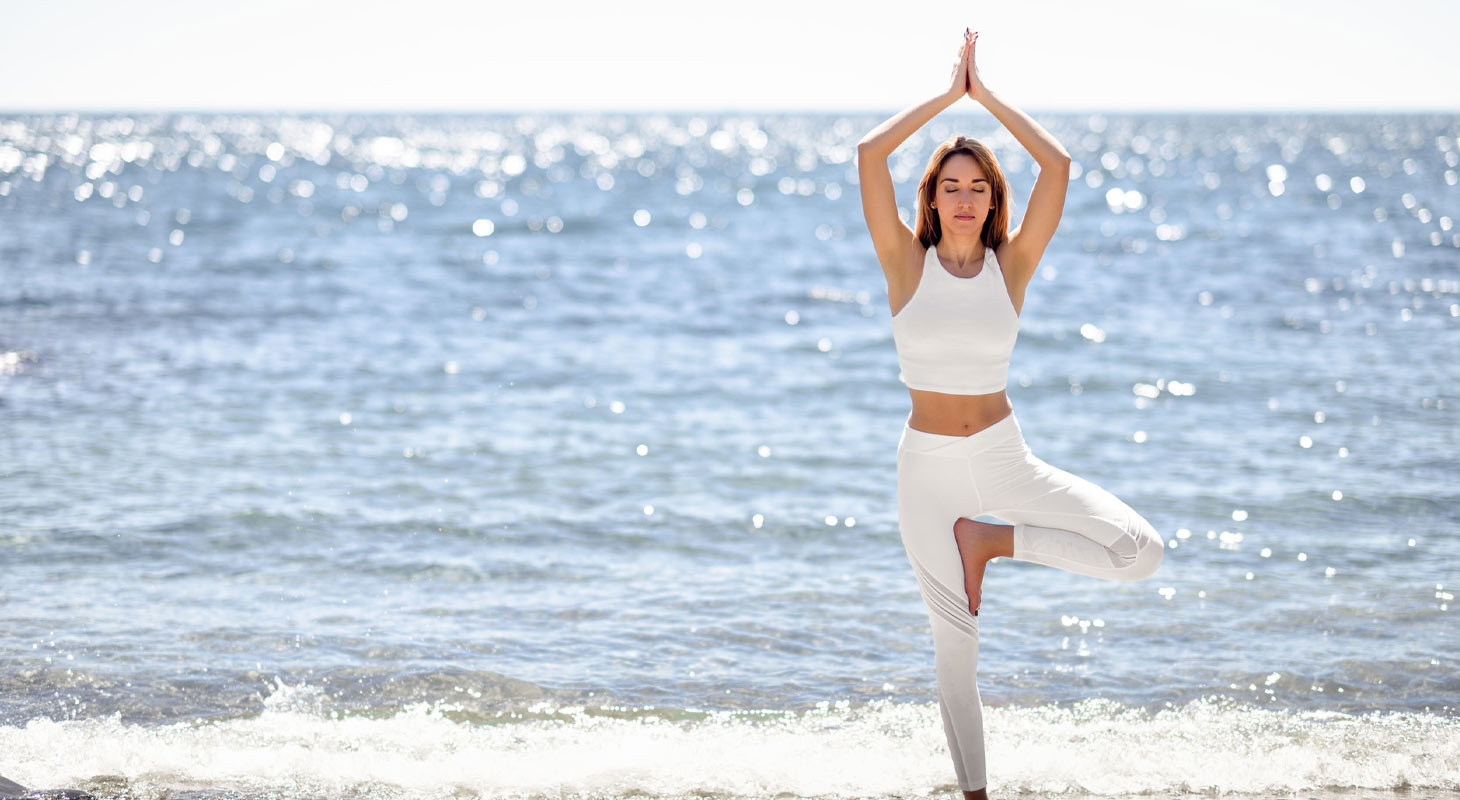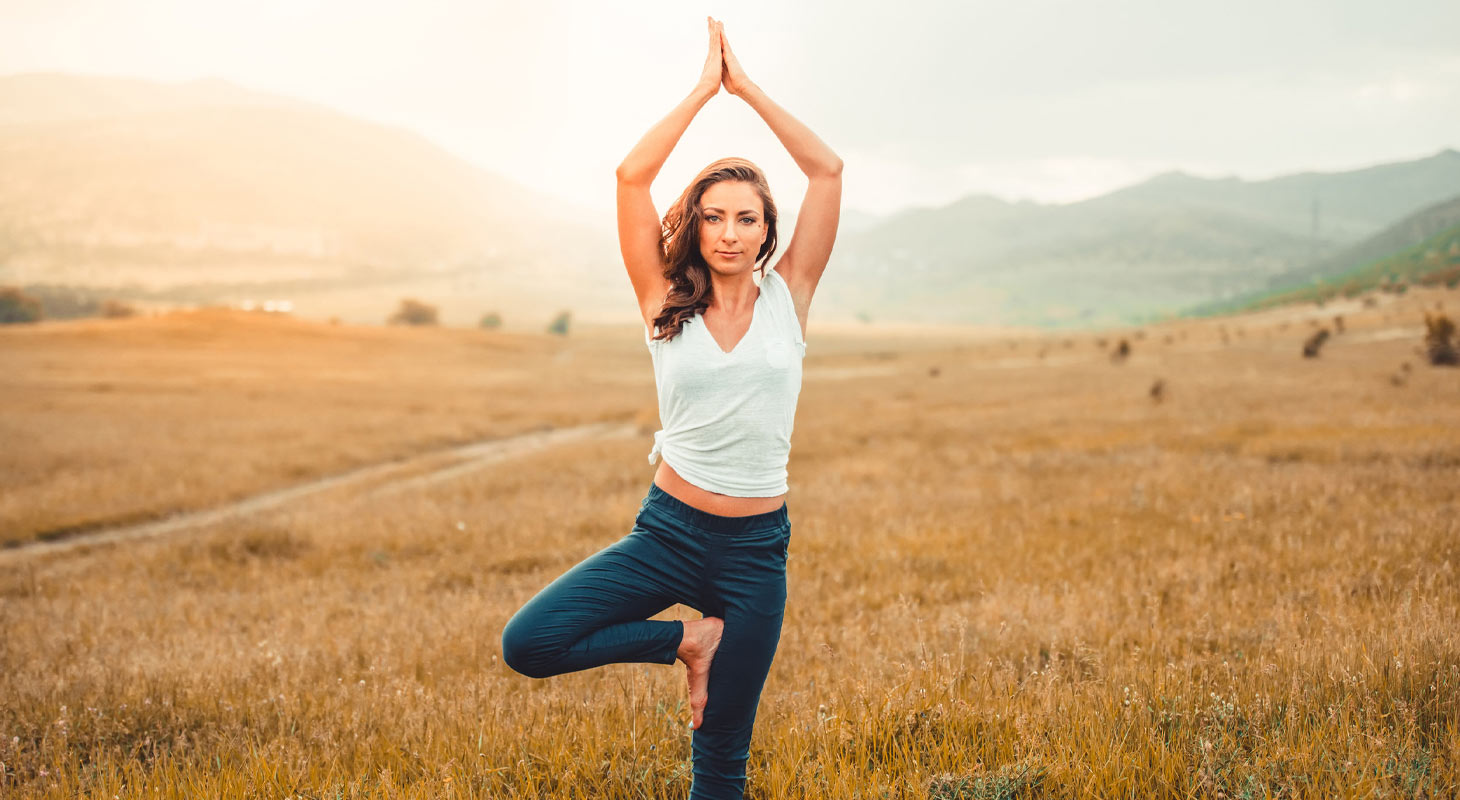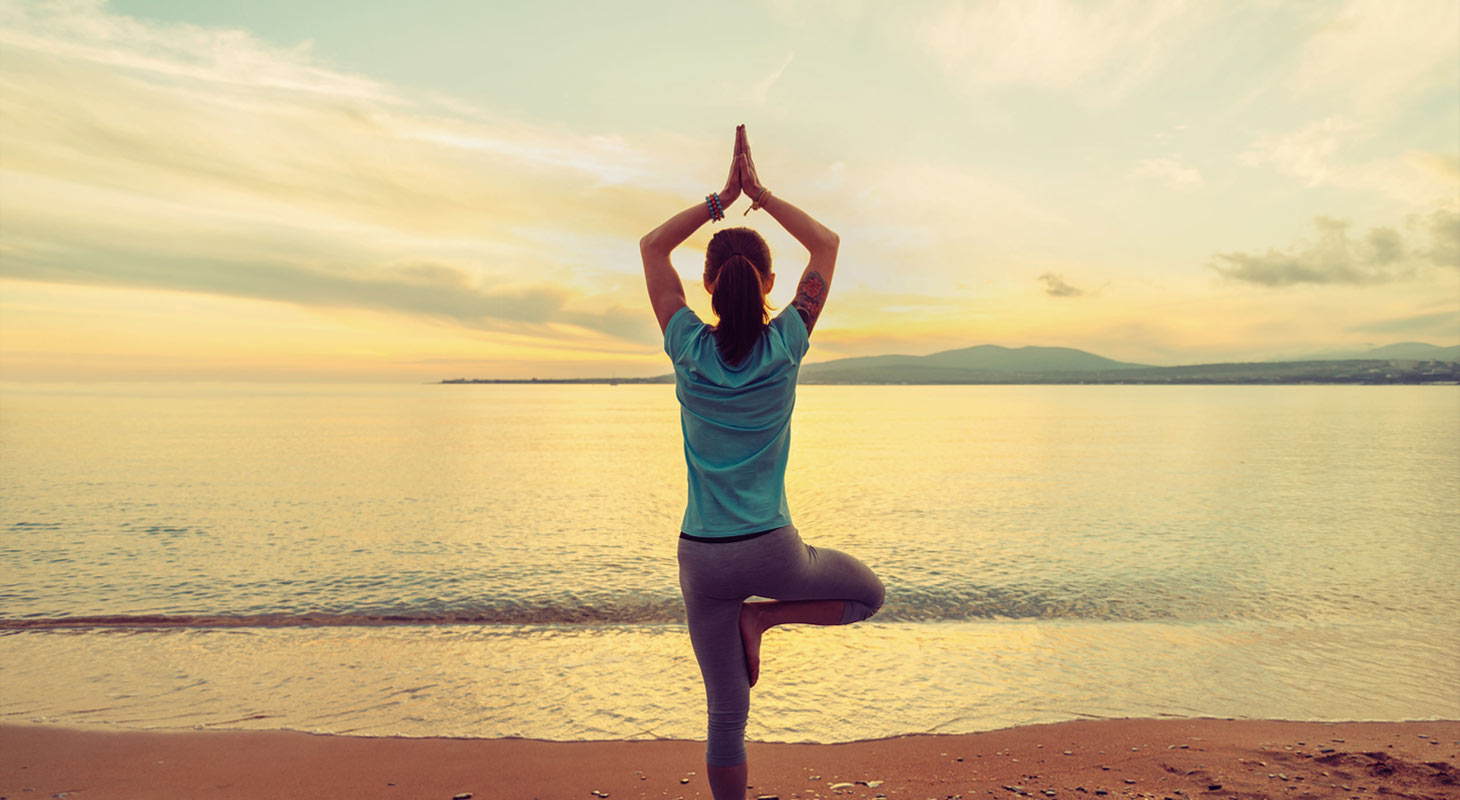Tree posture : All about this yoga posture
The tree posture, also known as Vrikshasana, is also one of the best known positions in yoga. It requires the participant to be absolutely calm and highly concentrated. He must be anchored in the present moment, and think only of himself without looking back or into the future. Breathing, which is predominant in this posture, is a means of achieving absolute concentration. Being in tune with oneself is essential to prevent the tree from falling!
The symbolism of the posture of the tree
The tree represents the link between the earth and the sky, this unbreakable union between the material (represented by the earth) and the spiritual (represented by the sky). Its roots are solidly anchored in the ground, from which it draws its energy to rise to the heavens and, if it were human, also to full consciousness and open-mindedness.
In the course of its life, the tree undergoes many transformations and modifications; in this sense, it represents the modifications that take place on us human beings.

The benefits of the tree's posture
Like all yoga postures, the tree posture has many beneficial effects on the human body, both physical and mental.
First of all, know that the tree posture will allow you to find a certain balance in your day, it allows a return to calm and relaxation of the mind. Each part of the body is thus balanced.
The position allows the strengthening and toning of the lower limbs, but also of the back and shoulders. It accentuates the flexibility of the hips and works on balance, concentration and coordination. In addition to these benefits, it also develops what is called proprioception.
Proprioception corresponds to deep sensitivity, and refers to the conscious or unconscious perception of different parts of one's body in space. This information is transmitted to the brain and comes from receptors placed on ligaments, tendons, and in muscles. A person with good proprioception will be less prone to the various accidents of life, i.e. sprains, falls, etc. And for good reason, this information transmitted to the brain will allow it to control and regulate posture and the various movements of the body.
Finally, the posture of the tree will improve the circulation of the different energies that run through the body.

Contraindications and Precautions
This posture is adapted to beginners in yoga, there is almost no risk to practice it. However, for people with very little balance this position is not recommended in order not to fall.
Note that the tree posture can be adapted in this case, to have a better balance. To do this, the elevated foot can be placed lower, say on the leg rather than on the thigh. It is also possible to practice this posture in a group, in which each participant will hold hands to stabilize the whole structure.
The technique for putting down long-lasting roots in the ground
Here are the steps to follow in order to achieve a correct and safe posture of the tree.
• First of all, start by standing with your feet parallel and slightly apart. Set a marker in front of you so that you can look straight ahead. Note that you will always have to keep your gaze fixed to maintain your concentration and therefore your balance.
• Then place your body weight on one foot, say the left foot. Feel that you are pushing the ground under that left foot and that your leg is toned, well stretched, and will not bend under your weight.
• Bring the sole of your opposite foot, the right foot, against the medial malleolus of your left foot (a bony protrusion on the inside of the ankle). For now the heel is touching your ankle and your toes are still on the ground. Try to maintain this initial balance.
• Once this is done, always keep your foot at the same level and open your right hip by bringing your right knee outwards. Your right lower limb should form a triangle. The pelvis should remain in line from the front and should not move.
• The hands come together at chest level, as if you were greeting someone. Fingers are tight, thumbs are wide apart and touch your torso lightly.
• Straighten your upper body, especially your head. Your hands press together, shoulders and elbows relaxed downward. Tighten your abdomen and buttock muscles to cover your entire body and begin to put down roots. Note that breathing is essential in the tree posture, as it allows you to concentrate. Therefore, try to breathe calmly but deeply for at least six consecutive breaths.
• You can now begin to rise. To do this, place your joined hands just above the top of the skull, without touching it. Bring your elbows back, with your shoulders always low. Hold this position for six more breaths.
• You can then bend your right leg and grab the heel of your ankle with one hand and bring it to the top of the opposite thigh. The right knee is wide open to the outside, with the sole of the foot pressing firmly against the left thigh. Continue the posture while breathing.
Once you have mastered the first side, you can switch to the other leg. Be aware that each person has one leg stronger than the other, but it is better to practice the same steps on each leg to balance your body as best as possible.

Conclusion on tree posture
The posture of the tree can make you feel a deep sense of well-being, and a sense of harmony and balance that is difficult to define if you have never practiced it. Based on its symbolism, the posture of the tree really makes sense and allows you to get to know yourself better while developing your physical capacities. Moreover, it is particularly adapted to beginners and everyone can practice it with his guide.


